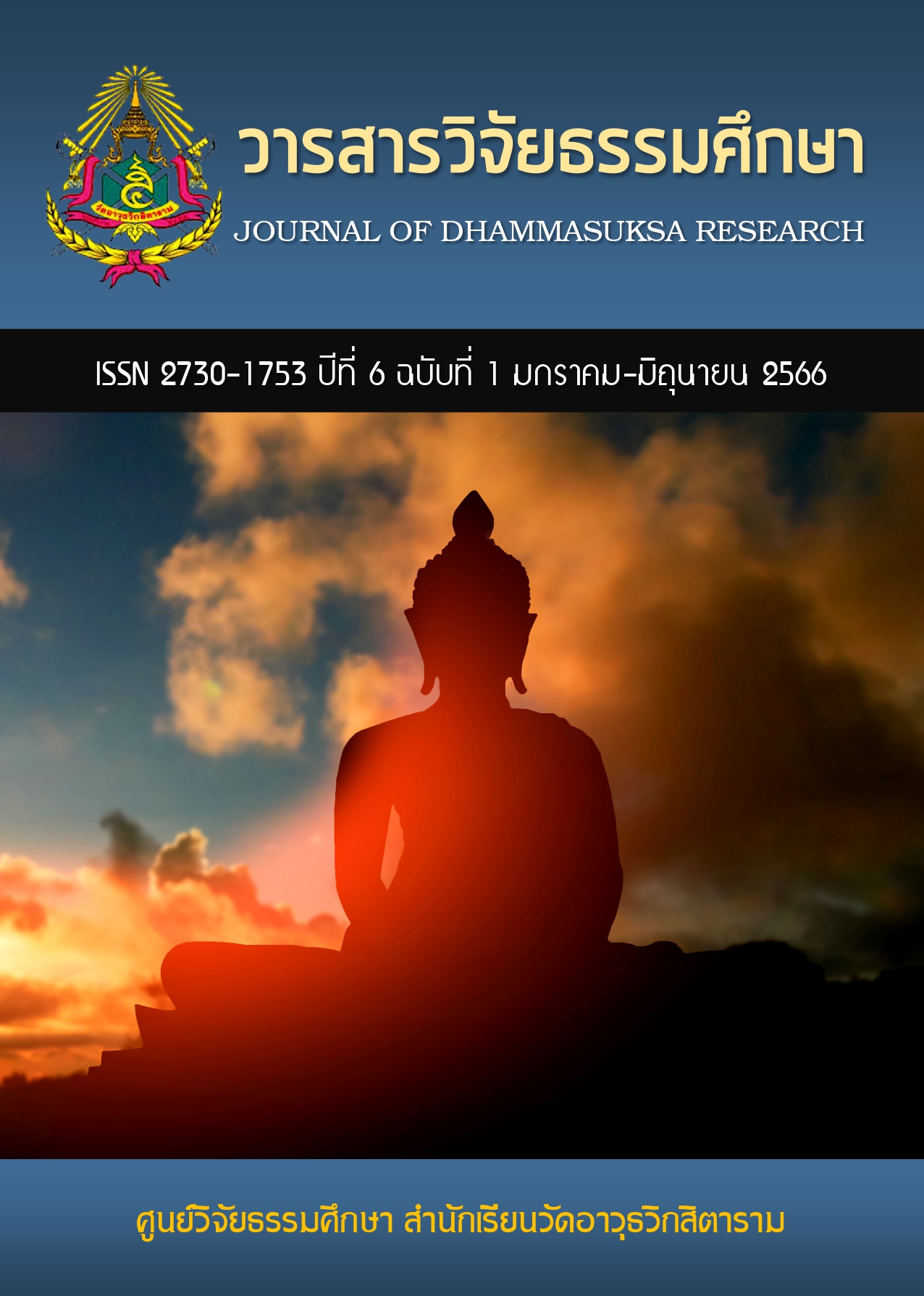NIRUTTIPAṬISAMBHIDÃ: CONSTRUCTING DISCOURSE SKILLS AS DEPICTED IN THE MILINDAPAÑHÃ
Keywords:
Niruttipaṭisambhidã, Discourse, MilindapañhãAbstract
The results showed that Niruttipaṭisambhidã: Constructing Discourse Skills As Depicted In The Milindapañhã. The use of Niruttipaṭisambhidã in the Buddhist scriptures It can be concluded that the Vinaya Pitaka is a nirutti practice for the teaching of the Dharma and the Disciplinary Laws, the Suttantapitaka. It is a nirutti practice for showing the way of dharma practice at all levels. There are according to the threefold principle and raised the subject matter of the Dharma teachings, etc., Abhidhamma Pitaka it is a nirutti practice for explaining the ultimate state. There is a logical information in the object, etc., the Holy Scriptures. It is a form of nirutti practice asking questions and explaining the answer by clarifying the meaning, characteristics, symptoms, virtues, virtues and punishments, etc., auspicious scriptures. It is a nirutti practice explaining how to behave. Treat people Society and mental development, etc., commentary on the Dharma chapter It is a nirutti practice in a storytelling style, showing a model of practice. Including raising concrete metaphors, comparing abstracts, etc.
The use of the Niruttipaṭisambhidã that appears in the scriptures of Milindapañhã the Summarize 7 patterns, namely 1) the form explaining the assumption of the supreme reality, 2) the form explaining the Dharma, 3) the form explaining the virtues. 4) Logical style 5) Metaphor style 6) Explanatory style 7) Guidelines style
Creating a distinction in the nirutistic discourse that appears in the Milindapañhã the reasons for the dissimilarity were 1) the issues raised for consideration 2) the investigation of the feasibility of the hypothesis 3) the exchange of knowledge in the unified direction of the problem solving 4) the rational example. Manifested on the experimental area. 5) The fulfillment of the discourse in the form of the PHUSA Model.
References
จำนงค์ ทองประเสริฐ. (2538). ตรรกศาสตร์ ศิลปะแห่งการนิยมความหมายและการให้เหตุผล. พิมพ์ครั้งที่ 11. กรุงเทพฯ: มหาจุฬาลงกรณราชวิทยาลัย.
บล๊อก OKnation. ความหมายของวาทกรรม. [ออนไลน์]. แหล่งสืบค้น: http://oknation.nationtv.tv/blog/ print.php?id=281466. [25 ธันวาคม 2564].
พระติปิฎกจูฬาภยเถระ รจนา. (2559). คัมภีร์มิลินทปัญหาภาษาไทย ฉบับมหาวิทยาลัยมหาจุฬาลงกรณราชวิทยาลัย. กรุงเทพฯ: มหาจุฬาลงกรณราชวิทยาลัย..
พระมหานามเถระ รจนา. (2559). สัทธัมมปกาสินีภาษาไทย ฉบับมหาวิทยาลัยมหาจุฬาลงกรณราชวิทยาลัย. กรุงเทพฯ: มหาจุฬาลงกรณราชวิทยาลัย.
ฟินเลย์สัน เจมส์ กอร์ดอน. (2559). ฮาเบอร์มาส: มนุษย์กับพื้นที่สาธารณะ. กรุงเทพฯ: สวนเงินมีมา.
มหาจุฬาลงกรณราชวิทยาลัย. (2539). พระไตรปิฎกภาษาไทย ฉบับมหาจุฬาลงกรณราชวิทยาลัย. เล่มที่ 31, 37. กรุงเทพฯ: มหาจุฬาลงกรณราชวิทยาลัย.
มหามกุฏราชวิทยาลัย. (2538). วิสุทธิมรรคแปล ภาค 1 ตอน 1. พิมพ์ครั้งที่ 8. กรุงเทพฯ: มหามกุฏราชวิทยาลัย.
มหาวิทยาลัยมหามกุฏราชวิทยาลัย. (2559). แผนยุทธศาสตร์พระสอนศีลธรรมในโรงเรียนโครงการพระสอนศีลธรรม-ในโรงเรียน พ.ศ. 2559. นครปฐม: สำนักงานโครงการพระสอนศีลธรรมในโรงเรียนมหาวิทยาลัย มหามกุฏราชวิทยาลัย.
มูลนิธิภูมิพโลภิกขุ. (2548). เนตติปกรณ์ (บาลี-ไทย). โครงการปริวรรตอักษรขอมและอักษรโบราณท้องถิ่น ชำระและแปลพระคัมภีร์ทางพระพุทธศาสนาเป็นภาษาไทย. กรุงเทพฯ: มูลนิธิภูมิพโลภิกขุ.
ราชบัณฑิตยสถาน. (25456). พจนานุกรม ฉบับราชบัณฑิตยสถาน พ.ศ. 2554. พิมพ์ครั้งที่ 2. กรุงเทพฯ:: ราชบัณฑิตยสถาน.
สำนักงานพระพุทธศาสนาแห่งชาติ. (2553). การปฏิบัติงานของพระสอนศีลธรรมในโรงเรียน. รายงานการวิจัย. นครปฐม: โรงพิมพ์กรมการศาสนา.
สำนักงานเลขาธิการสภาการศึกษา. (2560). แผนการศึกษาแห่งชาติ พ.ศ. 2560-2579. กรุงเทพฯ: พริกหวาน กราฟฟิค.
Additional Files
Published
How to Cite
Issue
Section
Categories
License
Copyright (c) 2023 Journal of Dhammasuksa Research

This work is licensed under a Creative Commons Attribution-NonCommercial-NoDerivatives 4.0 International License.


